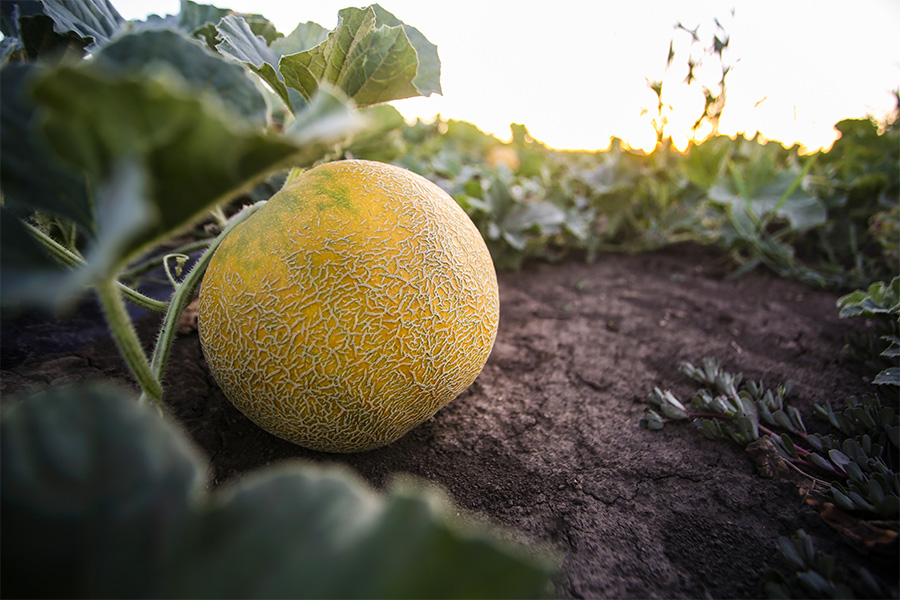Fruit and Vegetable Production
-

B 1198
Onion Production Guide
This publication represents the latest information available on the commercial production of short-day onions in south Georgia.
David G Riley, George E. Boyhan, Stanley Culpepper, Esendugue Greg Fonsah, Alton N Sparks, Timothy Coolong, Bhabesh Dutta, and William C. Hurst
|
-

This publication discusses organic Vidalia onion production in Georgia, from site selection and harvesting to certification.
George E. Boyhan and Timothy Coolong
|
-

The field is a complex environment with many factors that can interact to influence the growth of a corn plant. These factors can be living in the form of insects, diseases, nematodes and weeds; or, they can be non-living such as weather, nutrients or chemicals. In the proper combination of factors, corn can produce more than 200 bushels per acre in the Southeast; or in a totally unfavorable combination, every corn plant can die. When a problem is identified, it is important to determine the extent and severity of the problem to decide whether corrective measures are necessary or available. Use this guide and other technical information before implementing any management decision. Contributing authors to the original manuscript include: University of Georgia: Dewey Lee, former Extension Agronomist; Eric Prostko, Extension Weed Scientist; Steve Brown, former Extension Entomologist; Randy Hudson, former Extension Entomologist; and Bob Kemerait, Extension Plant Pathologist; University of Florida: Greg McDonald, Weed Scientist; Mississippi State University: Richard Baird, Plant Pathologist; Auburn University: Paul Mask, Extension Agronomist, and Kathy Flanders, Extension Entomologist.
G. David Buntin, Eric P. Prostko, and Robert C Kemerait Jr
|
-

This publication addresses safety issues inherent to corn production before and during a corn production season. We have divided safety issues into General Health and Safety, Corn Harvest, Corn Grain Bin, and Augers. Safety tips are presented that should be reviewed by anyone involved with corn production on the farm.
Glen C. Rains and Paul E. Sumner
|
-

Price and expenditure elasticities at the retail level between 1960 and 1993 were estimated for 11 fresh fruits and 10 fresh vegetables by employing a composite demand system approach and using annual data. Most fresh fruits and vegetables were found to respond significantly to changes in their own prices but insignificantly
to changes in expenditures. The study partially incorporated the interdependent demand relationships between fresh fruits (vegetables) and all other commodities, yet effectively avoided the problems of insufficient degrees of freedom.Chung-Liang Huang and James E. Epperson
|
-

The diamondback moth is a common pest of crops including cabbage, collards, turnip greens, mustard greens, broccoli, cauliflower and other leafy greens.
This insect has a long history of becoming resistant to insecticides beginning with DDT in 1953. Since then, DBM has become resistant to each new class of insecticide arriving to the market whenever those insecticides were used intensively and repeatedly to control a DBM population.
Prevention is critical. To delay the onset of resistance follow the practices listed in this circular. Even if resistance is detected in an area, these tips can inhibit its spread and preserve insecticide effectiveness.
David G Riley and Alton N Sparks
|
-

This publication contains a financial analysis of alternatives to methyl bromide and mulch for bell pepper in Georgia. This research is aimed at seeking the best fumigant substitute for methyl bromide (MB) along with the perfect mulch complement that effectively enhances production yield and profitability potential. The main goal of this report is to make the alternatives accessible to farmers
through different planning budgets they could use in decision making.Stanley Culpepper, Cesar L. Escalante, Esendugue Greg Fonsah, and Clarisse Ferrer
|
-

As farmers and farm advisers, you make many management choices during a growing season. For example, you may have to decide which cultivar to plant, which herbicide to use, how frequently to apply a fungicide, and what rate of nematicide to use. Often the information needed to make the best decision is available to you, but when it is not available you can frequently compare the options by conducting your own small experiments. Your experiments can be just as valid as any university study if you follow a few important principles of experimental design.
Richard F. Davis, Richard F. Davis, and Glendon H. Harris
|
-

This publication was compiled to meet the needs of the growing cantaloupe industry in Georgia. It provides extensive information to help growers be successful in cantaloupe and specialty melon production.
Ted McAvoy and Timothy Coolong
|